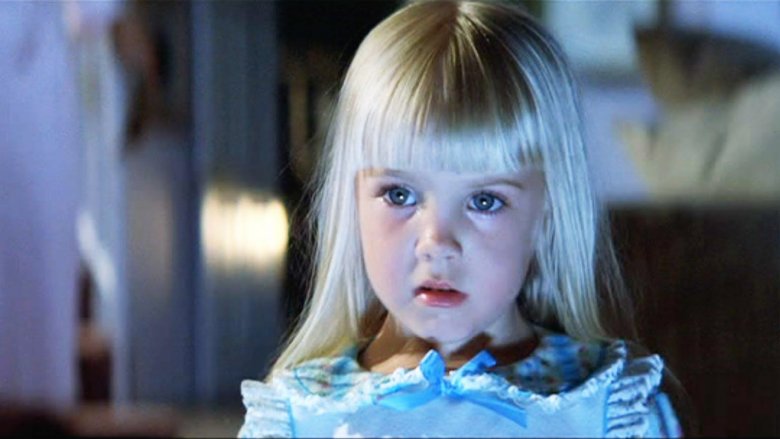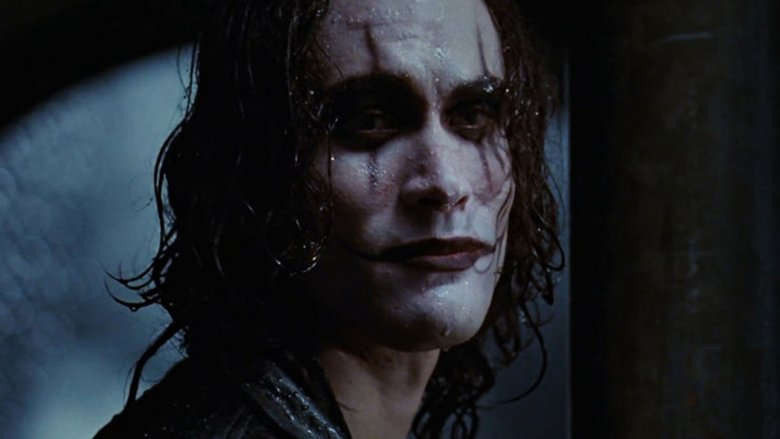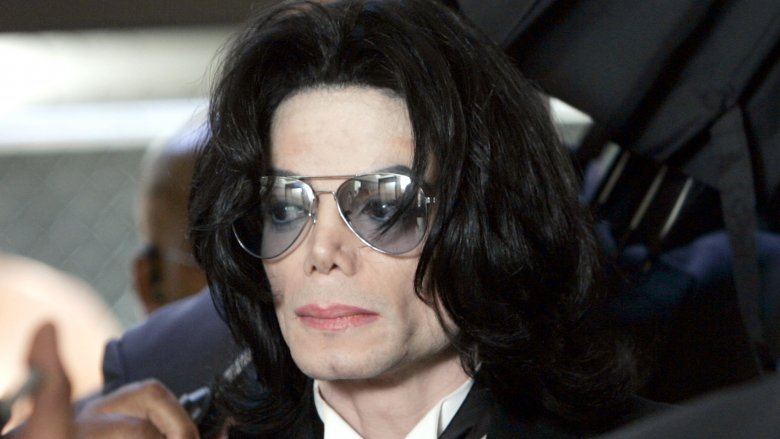Disturbing Facts Discovered In Celebrity Autopsy Reports
Autopsy reports will never make for particularly pleasant reading, but sometimes they're the only way we can make sense of a celebrity death. While the family of a recently deceased famous person will usually release an official cause of death to the media so that it can be relayed to fans, rarely will they go into the grisly details of their loved one's demise — that's the coroner's job. Most of the time, reading the coroner's findings is the only surefire way to separate fact from pure speculation, which, let's be honest, is usually pretty rife when somebody big has kicked the bucket.
The majority of celebrity autopsy reports contain few surprises, but sometimes the findings made by coroners are more shocking and sad than the death itself. From crazy drug cocktails to injuries too severe to imagine, here are the most disturbing things that have been uncovered in celebrity autopsy reports.
Johnny Lewis' autopsy report failed to explain his disturbing behavior
Johnny Lewis once had the world at his feet. The wiry young actor built a reputation as a new talent with appearances in Smallville, The O.C. (during which time he dated Katy Perry) and Sons of Anarchy. But, despite his character Half-Sack being popular with fans of the FX biker show, Lewis wanted out. According to Los Angeles Magazine, he told his father the storylines were getting too violent for his taste. Ironically, the circumstances of his own death wound up being more disturbing than anything he had to act out on the show.
Lewis reportedly went into a downward spiral after quitting Sons of Anarchy, going through an unsuccessful custody battle over his daughter and repeatedly getting arrested for assault. To turn his life around, he booked out a 1927 Spanish-style mansion retreat called the Writers' Villa, operated by a wealthy arts patron named Cathy Davis. The 81-year-old had been sharing her peaceful property with writers and artists for years, though Lewis would be her last tenant.
Police were called to the villa by neighbors and found Lewis dead in the driveway. "They noted that Lewis's left eye socket was caved in. His skull was smashed just to the left of center. He had plunged from either the second floor or the roof and died instantly," reported Los Angeles Magazine. But that's not all. Before his fall, investigators believe Lewis beat Davis and her cat to death. The details are gruesome, and the initial assumption was that Lewis was out of his mind on drugs at the time.
The autopsy, however, revealed that Lewis was not on drugs at the time of his death.
Heather O'Rourke's fatal condition went undetected
Unless you're a fan of classic horror, chances are you've never heard of Heather O'Rourke, but back in 1988, her heartbreaking story was the talk of Tinseltown. O'Rourke played Carol Ann Freeling in the first three Poltergeist movies, though she never got to see how the third one turned out, passing away before it was released at age 12. The young actress died on an operating table in The Children's Hospital of San Diego. The cause of death was determined to be intestinal stenosis, a severe bowel obstruction that O'Rourke had potentially suffered from since birth.
A hospital spokeswoman told the Los Angeles Times that a bowel obstruction "caused an infection that, in turn, brought on septic shock. The shock prompted full cardiac and pulmonary arrest." This condition came as news to her parents, who had no idea what was to come when they took her to the hospital for flu-like symptoms. By the time O'Rourke was airlifted to San Diego, she was in critical condition, and the surgeons could not save her.
While her family was initially too distraught to make a statement, after reading the autopsy report, her parents decided to file a wrongful-death suit, claiming the child's illness was misdiagnosed. "The X rays taken, if properly read, would have disclosed that this was the kind of condition that should have been treated surgically," said her mother, Kathleen O'Rourke Peele.
Cory Monteith's autopsy results shocked his fans
In 2013, Glee fans gathered to pay tribute to Cory Monteith (best known as jock turned Glee club member Finn Hudson), who died alone in a Vancouver hotel room at age 31. The public was shocked to learn that the actor died from a toxic reaction caused by high levels of alcohol and heroin, but those close to him claimed he had been trying to talk about his issues with substance abuse for years.
Shortly before his death Monteith starred in a disappointing indie crime flick called McCanick, winning the part of a drug-addicted convict simply by sharing stories from his own life. "He opened up quite a bit," director Josh. C Waller told People. "He was like, 'I can do this character. I know this character. I was this character. I have lived elements of this.'" Monteith had been candid about his past on several occasions, telling Parade that at one stage, he was abusing "anything and everything, as much as possible."
Despite attempting to sober up with stints in rehab, Monteith fell back into old habits, and by the time police found him collapsed on the floor of the Pacific Rim Hotel, it was too late for resuscitation. "It appeared that Mr Monteith had been dead for several hours," the coroner's report read. Paraphernalia including a "spoon with drug residue and a used hypodermic needle" was found next to his body, along with "two empty champagne bottles."
Brandon Lee's autopsy report raised red flags
Like his father, Bruce Lee, Brandon Lee died in circumstances just begging to be turned into conspiracy theories. Bruce was a picture of physical health when he dropped dead at age 32 in 1973. Many suggested foul play, and karate master Ed Parker even accused Chinese herbalists of poisoning Bruce. In the case of his son, Brandon, the public knew that he had died following an accident on the set of Alex Proyas' dark fantasy film The Crow, but when the martial artist's autopsy report was later released, red flags went up.
According to the Los Angeles Times, medical examiners were shocked when they found a .44-caliber bullet lodged in Lee's spine, raising questions about the standard of health and safety on Hollywood movie sets. The 28-year-old was reportedly wounded when a prop gun containing a dummy round (which look like a real bullet and is used for close-up shots to make the weapon appear loaded) was fired before being re-loaded with a blank. It's believed that at least a portion of the dummy round tore into his abdomen.
According to Entertainment Weekly, surgeons worked tirelessly to try to save Brandon's life, reportedly transfusing 60 pints of blood — enough for five grown men — during their failed attempt. One of Brandon's friends later revealed they had quizzed the action star about the risky stunts he was doing on The Crow, but he replied: "Nobody ever gets hurt doing that stuff. They've worked it out."
Heath Ledger's autopsy report revealed a deadly mix of prescription drugs
Heath Ledger passed away before he could reap the rewards of the painstaking method acting he put himself through preparing to play The Joker in 2008's The Dark Knight. He was posthumously awarded the Academy Award for best supporting actor. The Australian threw himself into the mindset of DC's Clown Prince entirely, shutting himself away with nothing but a journal and his own thoughts. "He pretty well locked himself up in a hotel room for weeks," his father said in the documentary Heath Ledger: Too Young To Die (via the Daily Mail). "He liked to dive into his characters, but this time he really took it up a notch."
The documentary gave us a glimpse into the journal Ledger kept, which contained photographs of wild hyenas and stills of Alex DeLarge (Malcolm McDowell) from Stanley Kubrick's A Clockwork Orange. The most chilling part of the book was the final page, in which Ledger scrawled the words, "Bye Bye." Many believed (and still believe) that playing The Joker killed Ledger, though his sister has insisted that he was far from depressed at the time. "It was actually the exact opposite," she said (via USA Today). "That was a shock to me that people even thought that, really."
What really killed Ledger was an "acute intoxication by the combined effects of oxycodone, hydrocodone, diazepam, temazepam, alprazolam and doxylamine," according to New York City's medical examiner's office (via The Telegraph). "We have concluded that the manner of death is accident, resulting from the abuse of prescription medications."
Brittany Murphy's death may have been preventable
Clueless and 8 Mile star Brittany Murphy was only 32 years old when she passed away from what her autopsy declared was pneumonia. According to Today, the coroner's report said Murphy had been suffering from anemia exacerbated by a heavy menstrual flow, which left her body weak and prone to infection. "By the time Brittany collapsed in her bathroom there was probably nothing the paramedics or hospital staff could have done to save her," pathologist Dr Richard Shepherd said (via the Daily Mail). "But had she been taken to hospital 24 hours earlier and given intravenous drugs, there is a very good chance she would have survived and would still be here today."
However, according to Murphy's father, his daughter didn't need an IV — she needed an antidote because he believes she was poisoned by an assassin. Angelo Bertolotti (who planned to sue Lifetime over its unauthorized biopic of his daughter) reportedly grew suspicious after his son-in-law died of the exact same condition just five months after Murphy. Bertolotti has suggested the couple was murdered by government officials after showing public support for a whistleblower. "I called it two weeks after it happened," another family member (wishing to remain anonymous) told the Daily Mail. "You just don't have two people die like that under those circumstances."
Michael Jackson's disturbing cause of death triggered controversy
Perhaps the most anticipated autopsy in the history of celebrity culture was that of the King of Pop, Michael Jackson, who was found not breathing in his bed on the afternoon of June 25, 2009 by his personal physician Conrad Murray. Jackson was working hard rehearsing for a series of comeback concerts in London. Murray was convicted of involuntary manslaughter in November 2011. According to People, "prosecutors portrayed Murray, 58, as a reckless doctor who, for $150,000 a month, sold out the Hippocratic oath, and to treat Jackson's insomnia, gave the King of Pop a nightly drip of propofol, an unpredictable and potentially fatal anesthetic."
However, that wasn't the only drug found in Jackson's system. Reports revealed that the pop legend was operating on a cocktail of midazolam, diazepam, lidocaine and ephedrine at the time — drugs that "have no place in an unmonitored setting or in unskilled hands," a physician told CNN. Plenty of other secrets were also revealed by the autopsy. "There was no indication from the autopsy that there was anything anatomically wrong with him that would lead to premature death," Dr. Christopher Rogers found during his examination of Jackson's body, but what he did find were some bizarre aesthetic alterations. Rogers revealed that singer's lips had been tattooed pink and that the front of his scalp had been inked black so that his wigs blended in better, reported CNN.
Carrie Fisher's autopsy revealed shocking drug details
For Star Wars fans, Christmas 2016 was far from a merry occasion, marred by the sudden and sad passing of Carrie Fisher. The 60-year-old actress was on a December 23 flight from London to Los Angeles when she went into cardiac arrest, and while airline staff and passengers did what they could until the plane touched down, Fisher died not long after being rushed to the hospital. She wrote herself into the annals of pop culture history playing Princess Leia Organa in the space epic, but while fans of Fisher were aware that she liked to party, the results of her autopsy were still disturbing.
The proverbial drug cocktail was found in Fisher's system, with her toxicology review finding "evidence of cocaine, methadone, MDMA (better known as ecstasy), alcohol and opiates," according to the Los Angeles Times. Perhaps the most shocking autopsy revelation was that "there was an exposure to heroin," though the dose and time of exposure could reportedly not be pinpointed by examiners, who named the official cause of death as sleep apnea.
Fisher's brother, Todd Fisher, spoke up after the autopsy was made public, telling Entertainment Tonight: "I would tell you, from my perspective that there's certainly no news that Carrie did drugs." He added, "If you want to know what killed her, it's all of it."
Amy Winehouse may have 'created her own ending'
Sadly, lots of people predicted the premature death of Amy Winehouse, including the singer herself. After graduating from prestigious performing arts academy The Brit School, Winehouse burst onto the scene in 2003, with her debut album Frank, which went triple platinum in the UK. Her follow up record, 2006's Back to Black, made her a star on the world stage, but as her professional life reached new heights, Winehouse was privately spiraling out of control.
The eccentric singer's battle with alcoholism was public knowledge prior to her death, but the full extent of her troubles only became apparent after her passing. Her doctor revealed she'd actually warned Winehouse that her binge-drinking was putting her in "immediate danger of death" after the star drank herself into a coma just months before she was found dead in her apartment on July 23, 2011. She was discovered in her bed with three empty vodka bottles discarded nearby. According to The Guardian, Winehouse had "416mg of alcohol per decilitre in her blood, enough to make her comatose and depress her respiratory system."
Friends of the "Valerie" singer said that she had been acting "pretty normal for Amy" at the time, but the warning signs had always been there. In 2007, after suffering from what was described as a series of drug-induced seizures, Winehouse reportedly told her mother that her days were numbered. "It's almost as though she's created her own ending," Janis Winehouse said (via the Daily Mail).
David Carradine's disturbing death was shrouded in questions
As the eldest son of prolific actor John Carradine, Kill Bill star David Carradine served in the U.S. Army for two years before he decided to give Broadway a shot. Things took off for him when an up-and-coming Martin Scorsese cast him in one of his earliest films (1972's Boxcar Bertha), and the following year, Carradine made his debut as mixed-race martial arts student Kwai Chang Caine in ABC's Kung Fu. That's the role he was best-known for until Quentin Tarantino came along.
Tarantino's two-part revenge epic did for Carradine what Pulp Fiction did for John Travolta, but sadly, he wouldn't get to enjoy his own Renaissance for long. In 2009, the actor was found dead in a Bangkok hotel. Thai authorities confirmed that Carradine's hands were bound above his head and he had rope tied around his neck and genitals. According to ABC News, leaked crime scene photos appeared to reveal that he was wearing "fishnet and a wig" at the time.
While his death was initially classified as suicide, a second autopsy suggested the 72-year-old had died in a sex act gone wrong. "The cause of death was asphyxiation, an inability to breathe," forensic pathologist Dr. Michael Baden told Reuters. "He didn't die of natural causes, and he didn't die of suicidal causes from the nature of the ligatures around the body, so that leaves some kind of accidental death."
Paul Walker's autopsy report reveals disturbing details
The death of Paul Walker in 2013 sent shockwaves through Hollywood, with the ironic circumstances of his horrific demise only adding to the heartache for his Fast and Furious co-stars. Walker was killed when the Porsche Carrera GT in which he was a passenger crashed at speeds of about 100 mph and nearly broke in half before it exploded into a ball of flames. The driver, Roger Rodas, was also killed. His autopsy revealed that the top of his skull had been so badly damaged that his brain was exposed. The description of Paul Walker's death is equally disturbing.
According to the Daily Mail, the LA County Coroner revealed that the actor was found in a "pugilistic stance," and the official cause of death on the certificate reads "combined effects of traumatic and thermal injuries," though Walker's autopsy report makes for much more graphic reading. He suffered multiple broken bones, including his pelvis, collarbone, and jaw, and his body was so badly charred that none of his organs was suitable for donation. Perhaps the most disturbing finding made during the autopsy was that Walker "could have taken a few breaths after impact as bits of soot were found in his trachea," the Daily Mail reported.
Thankfully for fans and family, such as Walker's daughter, no traces of drugs were found in either man's system.












